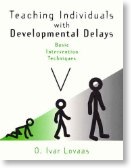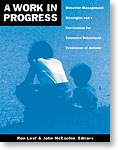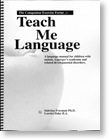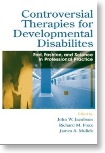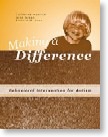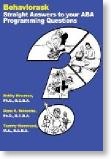The Integration Ballet
10/09/11 18:27

Here is a recipe for successful mainstreaming:
- First, choose a highly structured activity and be prepared to pre-teach the routine. A structured dance or gymnastics class is a good place to start. Get ready to positively reinforce your child for learning these routines by creating a reinforcement schedule.
- Second, get permission to go by yourself and learn the routine. If you can get permission to video-record the session, that’s a bonus.
- Third, teach the child with autism the routine at home until the child understands all the steps and/or circuit.
- Fourth, go with the child prior to class and lead the child through the lesson before it starts. If you can get the instructor to do this with you, that’s even better. If the child is older, then give him or her a few private lessons prior to introducing them to the class lesson.
- Fifth, on the day of the lesson, have someone who looks like an instructor pretend to help all the kids (but actually be there for your child). Ask to borrow a t-shirt from the facility so that the aide or therapist blends in. If you are not allowed to have someone else be there, then put the t-shirt on and help your child.
How do you get permission to do this? Well... you must refuse to take no for an answer. You need to meet with the head of the program and show the person in charge all the various steps you plan on taking in order to make this a wonderful experience for everyone. You must be very positive and sell the idea to them. Once you come with such a well thought out strategy, it will be unlikely that they will get in your way; however, in the case where you do encounter a closed-minded person, here is a sample of possible objections you may encounter and how to deal with them:
Objection: “We’d love to have this happen; however, we just don’t have the resources.”
Answer: Oh, I completely understand. That’s not a problem because I will be supplying the helper completely at my expense. She will be volunteering.
Objection: “We have a wonderful program for all the special needs children that we think is much more appropriate for your child.”
Answer: We actually would like our child in the class with the typically developing children because we are looking for typically developing peers for my child to model.
Objection: “Our insurance doesn’t cover people who are not on staff.”
Answer: I completely understand. Let’s use the same insurance that you use for volunteers applied to my child’s helper.
If you get nowhere, at some point you may want to introduce them to your lawyer and the Americans with Disabilities Act, Canada’s Charter of Rights or comparable legal protections in your jurisdiction. Once the studio or community center has a successful mainstreaming experience, they will be more open-minded the next time and the next parent that follows you will have an easier time of it as well.
Good luck and remember... failure is not an option!


